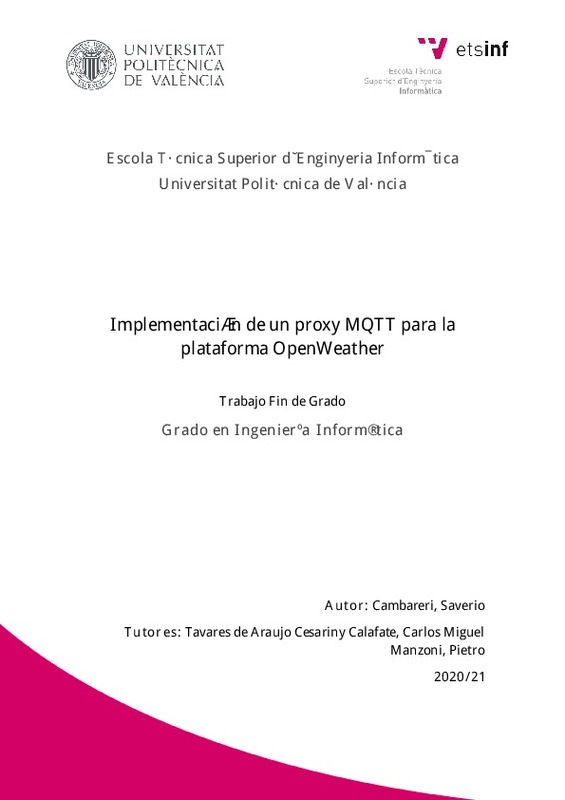JavaScript is disabled for your browser. Some features of this site may not work without it.
Buscar en RiuNet
Listar
Mi cuenta
Estadísticas
Ayuda RiuNet
Admin. UPV
Implementación de un proxy MQTT para la plataforma OpenWeather
Mostrar el registro completo del ítem
Cambareri, S. (2021). Implementación de un proxy MQTT para la plataforma OpenWeather. Universitat Politècnica de València. http://hdl.handle.net/10251/173961
Por favor, use este identificador para citar o enlazar este ítem: http://hdl.handle.net/10251/173961
Ficheros en el ítem
Metadatos del ítem
| Título: | Implementación de un proxy MQTT para la plataforma OpenWeather | |||
| Autor: | Cambareri, Saverio | |||
| Director(es): | ||||
| Entidad UPV: |
|
|||
| Fecha acto/lectura: |
|
|||
| Resumen: |
[ES] En los últimos años el protocolo MQTT se ha convertido en uno de los principales pilares del Internet de las cosas por su ligereza y flexibilidad. De hecho, que los dispositivos IoT estén conectados entre sí y puedan ...[+]
[EN] In recent years, the MQTT protocol has become one of the main pillars of the Internet of Things due to its lightness and flexibility. For IoT devices, being connected to each other and exchanging information is an ...[+]
|
|||
| Palabras clave: |
|
|||
| Derechos de uso: | Reserva de todos los derechos | |||
| Editorial: |
|
|||
| Titulación: |
|
|||
| Tipo: |
|
recommendations
Este ítem aparece en la(s) siguiente(s) colección(ones)
-
ETSINF - Trabajos académicos [5160]
Escola Tècnica Superior d'Enginyeria Informàtica







